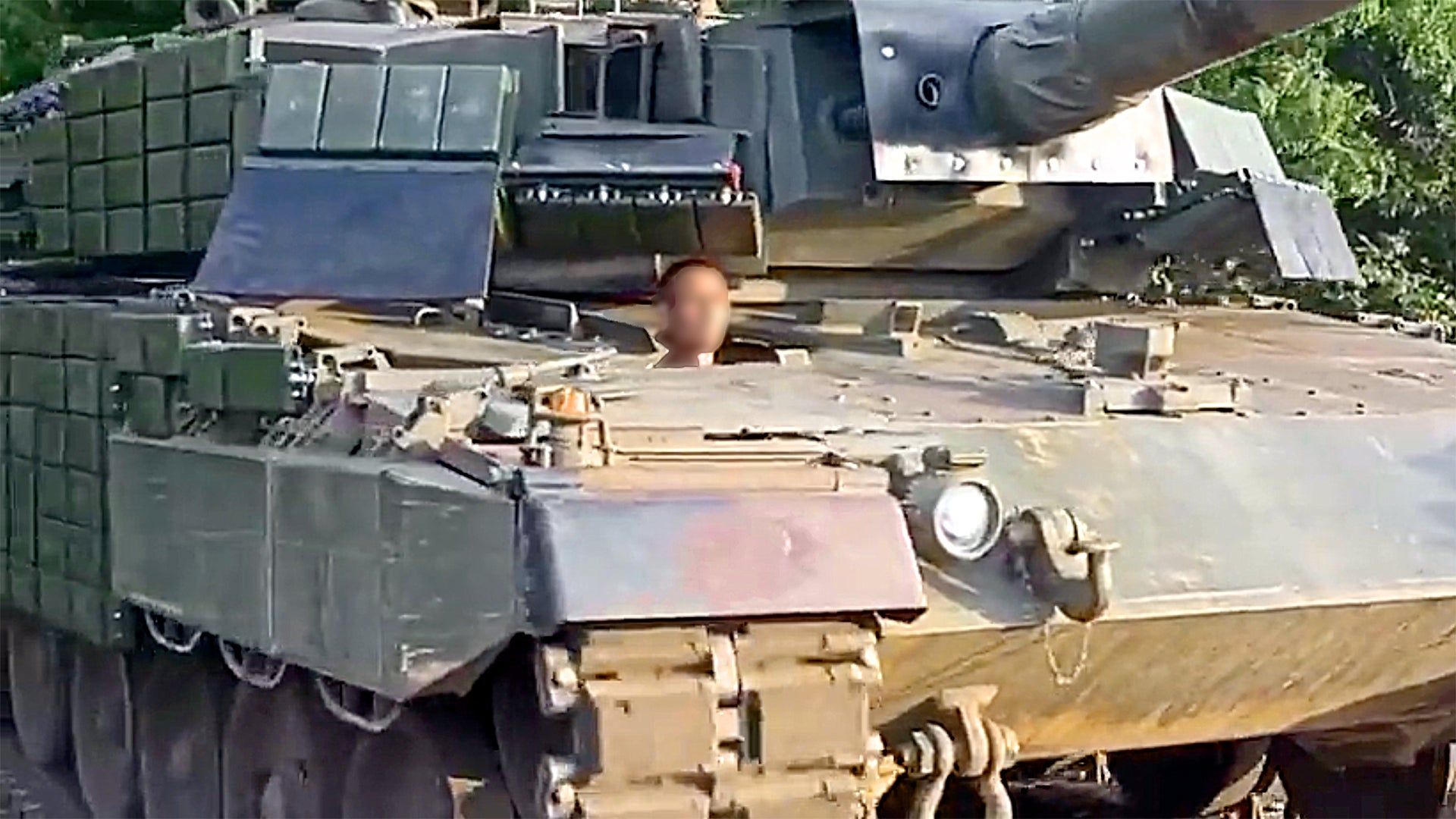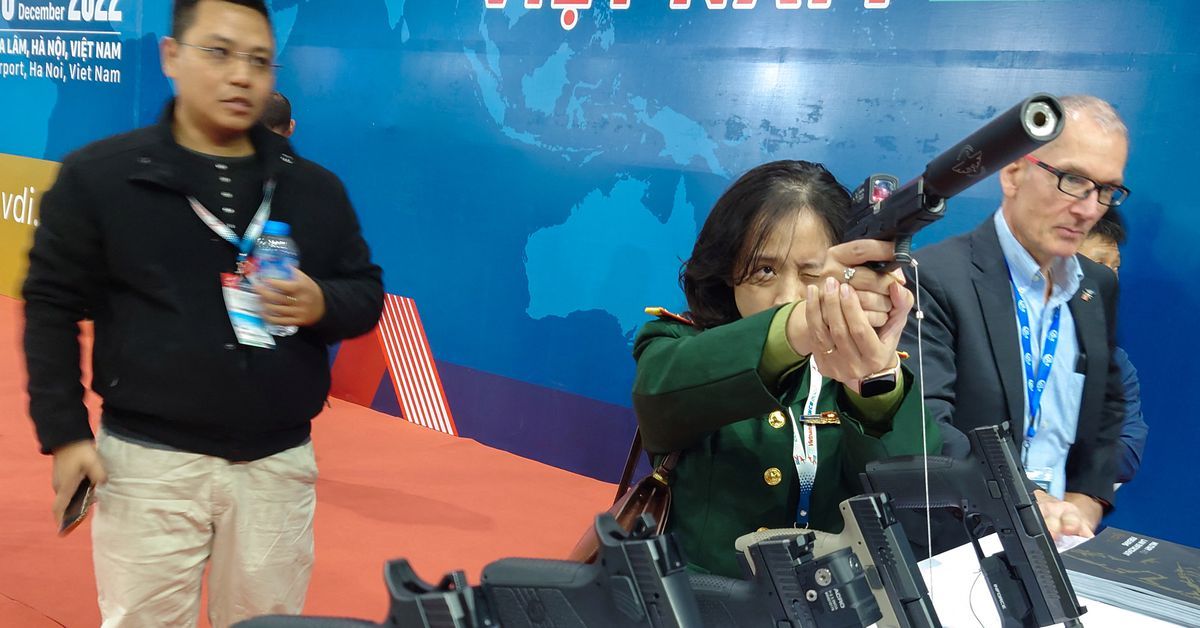Ukrainian Leopard 2 Tank Seen Covered In Explosive Reactive Armor
Weapons developments out of Ukraine come quick and often sudden. Case in point a Ukrainian Leopard 2 that has appeared in the field sporting an outer crust of explosive reactive armor (ERA) bricks that trace their roots back to the Soviet Union.
The folks at Oryx (@oryxspioenkop) even have a designation for the “Kontakt’d” Leopard 2, the 2A4V. The designation borrows from the Soviet-Russian nomenclature, with the “V” denoting “vzryvnoj ('explosive')” for added Kontakt-1 ERA bricks, such as the T-55MV, T-62MV, T-64BV, T-72BV, and T-80BV.
It looks like this particular Leopard tank was of Canadian origin. Canada has sent eight of the tanks to support Ukraine's war effort.
In general terms, ERA is an attempt to defend against penetrating anti-tank munitions like high-explosive anti-tank (HEAT) and armor-piercing rounds by detonating on impact before the round hits the tank’s hull. The counter-blast effect can disrupt the weapon’s effects or destroy it outright.
The Leopard 2 already has stout protection with its armor scheme from treads to turret. The Kontakt bricks, an increasingly common “Mad Max” addition on both sides’ armored vehicles, can potentially add protection from ubiquitous threats like anti-tank guided missiles and closer-range weapons like rocket-propelled grenades.
At the opposite end of the spectrum, we’ve written about Russian attack helicopters using long-range anti-tank missiles to strike advancing Ukrainian columns. In that scenario, surviving the first strike from an often unseen enemy at long range can mean the difference between making it to cover or having to abandon the vehicle altogether.
The fact that Ukraine is already modifying their donated high-end western armor is telling. Learning lessons the hard way, with the loss of irreplaceable personnel and hard to come by equipment, results in rapid innovation. Clearly, adding ERA to Leopard tanks is part of that evolution. And it's not like ERA isn't in use with NATO countries either. It seems Ukraine thinks the additional protection it could provide is a worthy trade for the additional weight and other considerations that comes with it.
And of course it is always fascinating to see advanced NATO equipment modified with capabilities designed and fielded by the foe it was intended to deter and possibly confront, and vice-versa. These practices have become an increasing staple of the war so far.
It will be interesting to see whether the Kontakt bricks’ use on Ukrainian Leopard 2s and other Western-supplied armor becomes a standard issue as Ukraine’s counteroffensive continues.
Source: The War Zone


